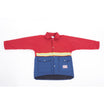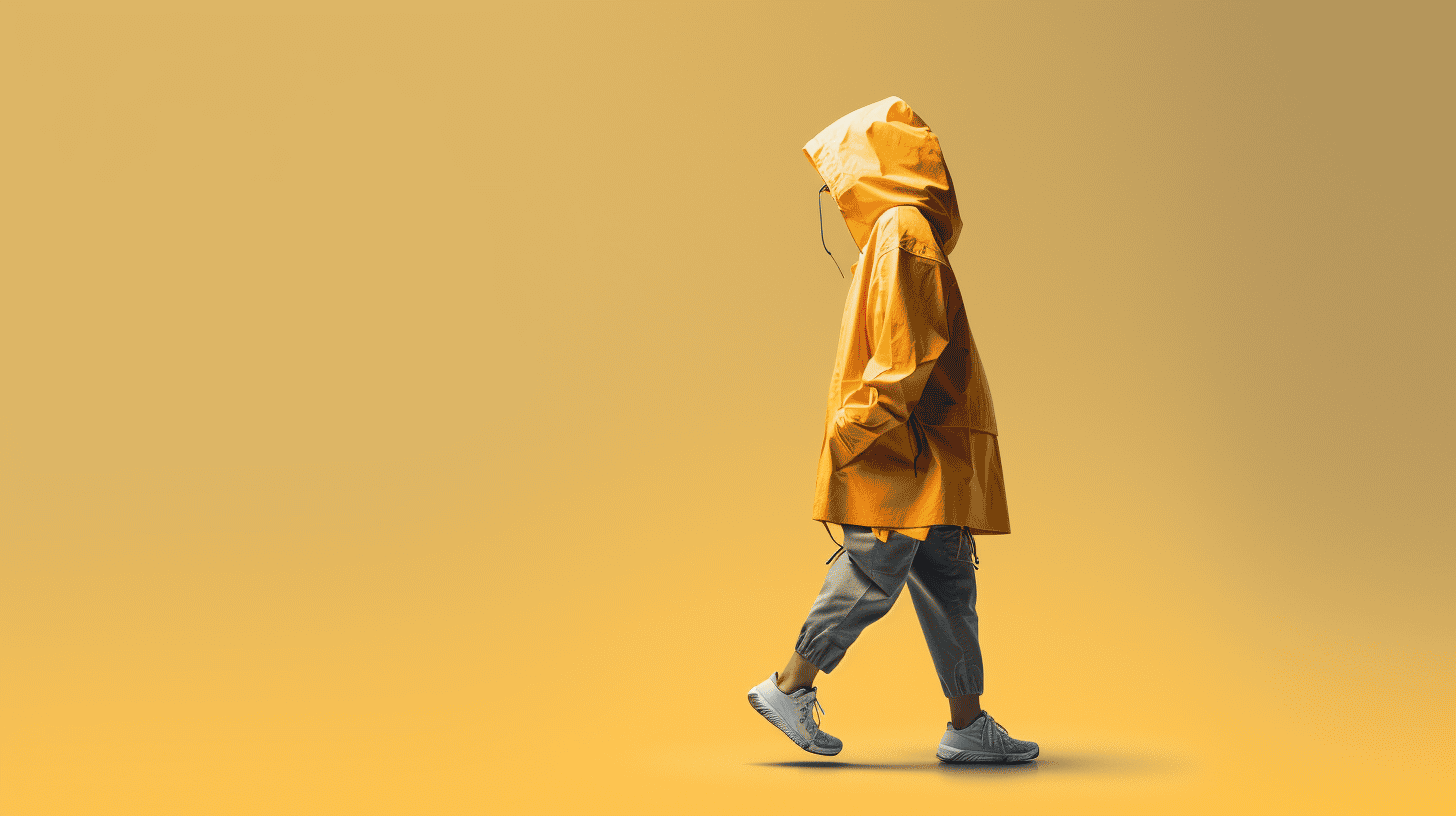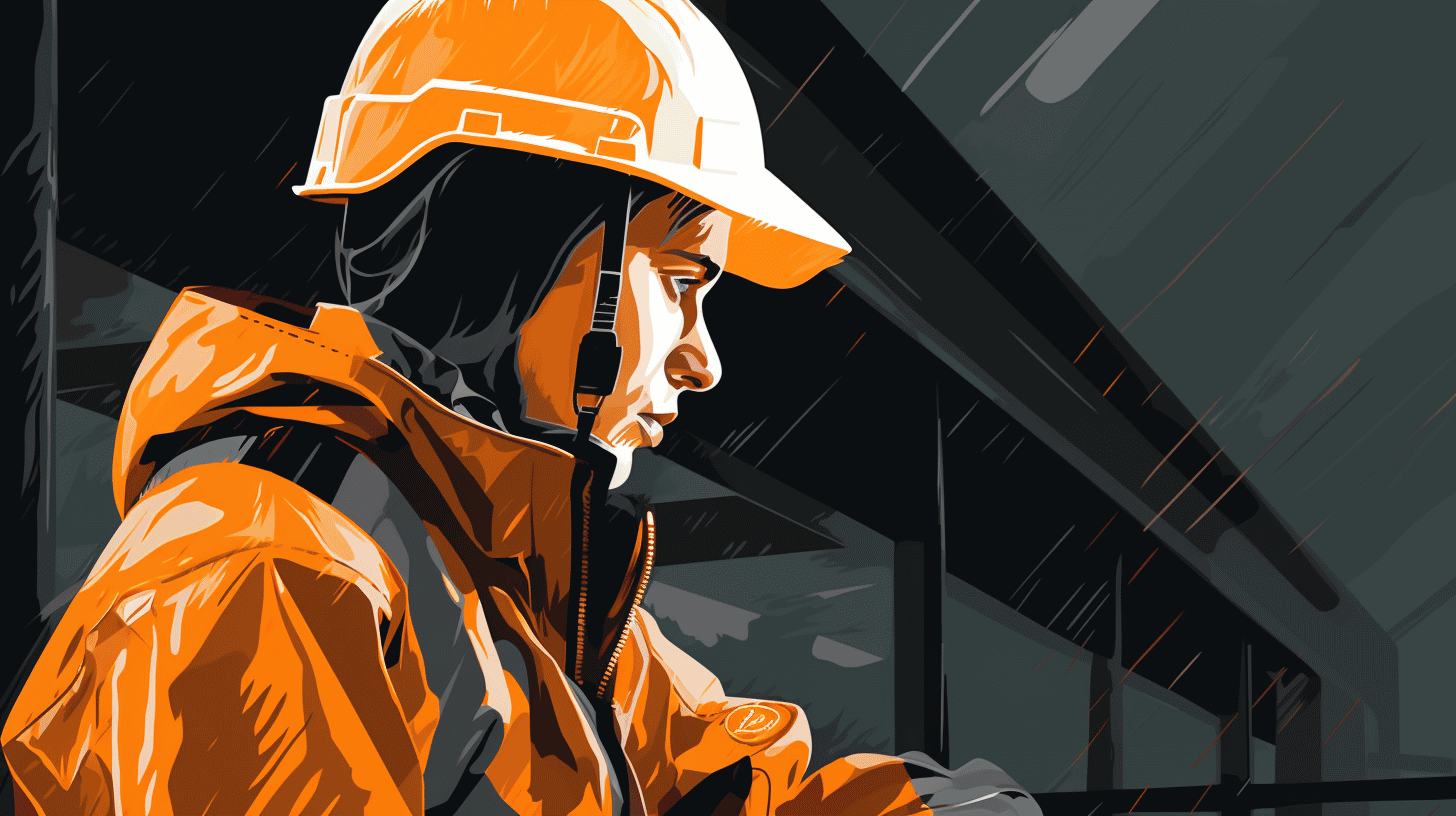The Need for Construction Rain Gear
In the construction industry, the work doesn't stop just because the weather changes. Rain, snow, or extreme heat; the workforce must be ready to face them all. Essential to their preparedness are specialized work-wear known as construction rain gear. A proven force against the elements, it ensures that workers can perform their duties without undue discomfort or risk, making it a mirror to the very buildings they construct – protective, reliable, and enduring.
Outdoor Work in Adverse Weather
Every weather condition brings a unique set of challenges. While summer heat can cause dehydration and heatstroke, the winter chill can lead to hypothermia and frostbite. In these scenarios, having suitable gear is not just about comfort but survival.
- Rain Gear: An imminent need for anyone working in the outdoors, construction rain gear shields workers from the cold and the wet, ensuring they remain warm and dry. This gear usually includes waterproof jackets, trousers, and boots that are designed to stand up to the severest of downpours.
- Heat-Resistant Gear: For scorching summer days, heat-resistant gear reduces heat stress and the risk of heat-related illnesses. These garments are typically lightweight and breathable, offering protection from the sun while maintaining a comfortable body temperature.
Health and Safety Concerns
Remember that construction rain gear is more than a waterproof jacket or a pair of boots; it's a form of personal protective equipment (PPE). These outfits reduce workers' susceptibility to adverse weather conditions and potential health risks, such as hypothermia or skin diseases.
- Waterproofing: Waterproof gear prevents water from seeping in and causing discomfort or illness. It keeps the wearer dry and reduces the risk of cold-related health issues.
- Insulation: Insulated gear provides warmth in cold conditions, decreasing the risk of frostbite or hypothermia.
- Ventilation: Well-designed gear should also offer breathability to prevent overheating when working in hot environments.
Efficiency and Productivity
There's another crucial reason why construction rain gear is vital in the construction industry. It leads to increased productivity and efficiency. How?
- Comfort: When workers are comfortable, they are more likely to perform their best. The right gear enables them to face harsh weather conditions without sacrificing comfort.
- Durability: Quality rain gear is built to last and withstand the rigors of a construction site, reducing the need for frequent replacements.
- Mobility: Construction involves a lot of physical work. Hence, apparel that offers freedom of movement can significantly enhance workers' productivity.
Regulations and Standards
Various national and international safety standards and regulations mandate the use of appropriate protective garments in the construction industry. Compliance with these guidelines is not just a matter of law, but a commitment to worker safety and well-being.
To sum up, investing in construction rain gear is paramount for any construction business. It ensures workers' health and safety, improves efficiency and productivity, and adheres to set regulations and standards. A seemingly inconsequential aspect of construction work, the right gear can make a world of difference. It's more than just an extra layer of clothing; it's an armor of resilience against the unpredictable elements.
Determining the Quality of Construction Rain Gear
Ever been caught in a downpour while on a construction site, continuously praying that your rain gear holds up? Ensuring you have quality construction rain gear is vital for maintaining productivity and comfort. It's not just about staying dry in harsh weather but also about ensuring the gear stands up to long-term wear and tear while providing optimum comfort and venting capabilities. In this discussion, we will delve into the primary considerations you should heed to guarantee you opt for the highest quality construction rain gear possible.
Material and Manufacture
One of the essential factors determining the quality of construction rain gear is the material used and how the garment is made.
- Polyvinyl chloride (PVC) rain gear is a common choice due to its strength and durability. However, it can be uncomfortable in warmer climates due to its limited breathability.
- Nylon and polyester are other popular choices. When treated with a waterproof coating, they can make lightweight, breathable rain gear.
- For premium construction rain gear, look for sealed seams and secure fastenings, which can significantly enhance its waterproof qualities.
Getting down to the nitty-gritty of the garment's structure and material can be an intricate task, but it's an effort that pays dividends towards quality assurance.
Durability and Longevity
Construction sites are demanding environments. As such, quality rain gear needs to withstand aggressive handling and long-term use. Several factors contribute to the durability of rain gear:
- The thickness of the material: Thicker materials usually offer better durability but can limit comfort and mobility.
- Reinforced seams: These provide extra protection against wear and tear.
- High-quality zippers and other fastenings: The finest rain gear includes robust fastening mechanisms to prevent leaks and splits.
Endurance and quality often come hand-in-hand. They ensure that you get your money's worth with your chosen gear serving you through multiple wet and windy seasons.
Comfort and Fit
No matter how waterproof or durable, if your rain gear is uncomfortable or poorly fitted, it's not quality gear. What should you consider for comfort and fit?
- Breathability: Breathable materials help regulate your body temperature and prevent you from getting too clammy.
- Room for layering: Good quality construction rain gear should allow room for you to wear additional layers underneath for colder weather.
- Adjustable features: Look for adjustability in areas like the waist, cuffs, or hood for better fit and comfort.
When your work gear fits like a second skin and breathes with you, it's a sure sign of impeccable quality.
Water-Resistance and Breathability
The design, material, and construction of rain gear determine its level of water resistance and breathability.
- Water resistance is an essential attribute. It will prevent rain from penetrating the material, keeping your under clothing dry. Features like a waterproof coating and taped seams enhance this resistance.
- Breathability is equally as important in preventing sweat and condensation from getting trapped inside the gear. Breathable materials allow moisture from your body to evaporate, keeping you comfortably dry.
Checking the water-resistance and breathability ratings is a handy tool for assessing the quality of your construction rain gear. Top-quality gear will effectively blend both capabilities to give you dry yet breathable comfort.
Deciphering the quality of construction rain gear isn't an effortless feat—it involves examining the materials, manufacture, durability, comfort elements, and the essential capabilities of water-resistance and breathability. Once you cross these checkpoints on your list, you're well on your way to selecting top-notch rain gear that promises to breeze through rainstorms, leaving you dry, comfortable, and, most importantly, ready to face another workday.
Price vs Quality in Construction Rain Gear
Navigating the construction world often requires more than just technical know-how. One crucial aspect many tend to overlook involves personal protective equipment (PPE), particularly construction rain gear. How essential is rain gear, you may ask? It's a game-changer! But how does one strike a balance between price and quality, often seen as territory markers separating just another PPE from an impressive one? Allow us to shed some light on this too-often nebulous topic.
Evaluating Initial Purchase Cost
Where quality and price intersect, value can be found. Nowhere is this truer than in the realm of construction rain gear. While the temptation to go for the lowest price might be strong, buyers should beware. Lower priced gear sometimes may not offer the level of protection and durability associated with quality construction rain gear. However, going for extremely high priced gear might not always guarantee the best quality. So what's the approach to adopt at this crossroad?
- Do your research: get to know the best brands in the market, understand what makes them unique, and then examine their price points.
- Compare and contrast: find similar products with different pricing structures that do not compromise comfort, durability, and protection.
- Set a budget: have an idea of what you are willing to spend. Be flexible, but also consider the long-term implications of your purchase.
Cost Efficiency Over Time
Now let's talk about the long game. Sure, that inexpensive raincoat you bought saved you a few bucks upfront, but how many storms can it weather before leaving you, literally, high and dry? A higher quality - and often higher priced - construction raincoat might initially feel like a hit to your wallet, but it usually comes with a more extended warranty, which can be a lifesaver in the long run.
Think of it like this:
- Lower cost raincoat: may last one season (if lucky), need replacement shortly.
- Higher cost, quality gear: may last several seasons, can be fixed under warranty if issues arise.
The lasting power of quality gear often offsets the initial cost. Also, consider the lost time and productivity that comes with having to replace your gear continually.
The Hidden Costs of Low-Quality Gear
Now while the bottom line might look tempting, your health and safety should never be compromised. The hidden costs of low-quality gear could potentially include:
- The risk of catching a cold or other weather-related conditions due to inadequate protection.
- The discomfort that can lead to decreased productivity in your work.
- Possible injuries due to a lack of safety features commonly present in quality gear.
In essence, when buying construction rain gear, however alluring the low price may seem, always give quality a seat at the negotiation table. Your health, safety, and ultimately your wallet will thank you for it in the long run. Remember, price is what you pay, and quality is what you get. Find that balance, and you'll be adequately shielded from the storms!
Key Features to Look for in High-Quality Construction Rain Gear
Picture this: You are a construction worker, standing tall on a skyscraper in the midst of a downpour. Amidst the rain and wind, your safety and efficiency hinge on your rain gear's quality. This is why the importance of high-quality construction rain gear cannot be understated. As a worker contending with the elements, having the right protective clothing can make the difference between a typical day at work and a potential health hazard. But how do you navigate the plethora of construction rain gear on the market today? Here we break down the key features you should consider:
Integrated Hood
One crucial element that separates high-quality rain gear from inadequate options is an integrated hood. This feature provides an added layer of protection, particularly for the head and neck areas. An integrated hood designed with a peak can further shield against rain, increasing visibility by keeping the water out of your eyes. The best construction rain gears have adjustable and removable hoods, providing flexibility to adapt to varying weather conditions.
Reinforced Seams
Reinforced seams may not be the first thing you think of when purchasing rain gear, but their importance shouldn't go unnoticed. These seams fortify the construction of the gear, preventing it from quick wear and tear, especially in high-stress areas. Look for rain gear with taped or sealed seams. These provide superior protection against water intrusion, keeping you dry during even the heaviest downpours.
Ventilation Options
While rain gear's primary purpose is to shield you from precipitation, don't forget about ventilation. Construction projects can be strenuous and, even during cooler, rainy periods, overheating is a risk. High-quality rain gear often features ventilation options such as underarm vents or back vents, which allow perspiration to escape, keeping you dry and comfortable inside and out.
High-Visibility Elements
Last but certainly not least, consider the importance of high-visibility elements. Construction zones can be hazardous environments, and visibility can be reduced during a rainstorm. Opt for rain gear that includes high-visibility accents like reflective tape and bright colors, which help ensure that you can be seen by others, even in challenging conditions.
In conclusion, selecting high-quality construction rain gear depends on a careful consideration of its integrated hood, reinforced seams, ventilation options, and high-visibility elements. Investing in a product that ticks these boxes can certainly enhance your safety, comfort, and overall productivity, no matter what Mother Nature decides to throw at you.
The Role of Suppliers in Providing Quality Construction Rain Gear
In the world of construction, working conditions play a massive role in project timelines, worker safety, and overall job performance. One factor often overlooked is the climate, more particularly, rain and its effects on construction work. High-quality construction rain gear becomes an invaluable tool in these circumstances, but, how significant is the role of a supplier in providing these materials? Well, it's simply crucial.
Product variety
Suppliers of construction rain gear hold the responsibility of providing a wide variety of products. Let's look at it this way:
- Construction work presents various risks and challenges, differing based on the specific job at hand.
- Some tasks may require heavy-duty, water-resistant jackets and trousers, while others may only need a light, breathable poncho.
- The requirements might also include safety features like high-visibility color schemes or thermal insulation for colder climates.
Therefore, a diversified product range is imperative. It assures that a single supplier can meet the varied needs of construction companies, providing them with a one-stop-shop experience. Remember, a supplier who maintains diverse stock demonstrates an understanding of the complexity of construction works.
Responsible sourcing
On to the next crucial aspect - responsible sourcing. Suppliers play a critical role here. With the global push towards sustainability and ethical production, suppliers have a moral and commercial responsibility to ensure their construction rain gear products are sourced responsibly. This means checking that their manufacturers employ ethical labor practices, use environmentally friendly materials, and adhere to safety standards.
Returns and Warranty Policies
Another aspect linked to suppliers lies in their returns and warranty policies. A quality supplier stands behind their products, willing to replace gear that is faulty or doesn’t meet a construction company’s requirements. An understanding supplier is paramount when the safety and comfort of a company's team rest on these rain gear products.
Pre-sales and After-sales Support
But don’t forget about the importance of pre-sales and after-sales support! When a construction company invests in quality rain gear, guidance from the supplier is often needed, whether that’s information on the best gear for their climate or help with sizing to ensure a comfortable fit. After-sales support can be equally crucial, providing assistance with care instructions, warranty information, or even product replacements if needed.
As we've uncovered, the role of suppliers in providing construction rain gear extends way beyond simply selling a product. They're responsible for delivering variety, ensuring ethical sourcing, implementing fair warranty policies, and providing comprehensive customer support. In essence, a quality supplier of construction rain gear doesn't just focus on business; they focus on adding value to their client's work life.
Conclusion
Navigating through the complexities of choosing the right construction rain gear can be challenging, but understanding the importance of quality in this selection process is pivotal. From worker's health and safety to ensuring efficiency and productivity at the construction site, the role of quality construction rain gear is indispensable.
The parameters we discussed, from material manufacture to durability, comfort to water-resistance, are all critical when assessing the quality of rain gear. Additionally, considering the price-quality balance and the long-term cost efficiency can be a game-changer in this purchase decision.
Fulfilling these stringent quality requirements might seem like an arduous task, but companies like Hurricane Raingear make it effortless. They provide 100% waterproof and rip-resistant rain gear, balancing comfort and functionality while adhering to the highest standards. Renowned for their commitment to quality, their gear showcases robustness, breathability, and enhanced visibility with reflective 3M striping.
Remember, the right supplier can make a tremendous difference, offering product variety, responsible sourcing, and unwavering support along with reasonable returns and warranty policies. In the field where a slight compromise in quality can have significant consequences, choose wisely, always prioritizing quality over everything else. Because your safety and comfort should never be a gamble, trust the best in the business. Visit Hurricane Raingear's website for optimized solutions to all your construction rain gear needs.
Frequently Asked Questions
-
Why is quality important when selecting construction rain gear?
Quality is important when selecting construction rain gear because it ensures durability, provides effective protection against rain and other elements, enhances comfort and mobility, and ensures the gear will last longer, saving you money in the long run.
-
What are the key features to look for in high-quality construction rain gear?
Key features to look for in high-quality construction rain gear include waterproof and breathable materials, sealed seams, adjustable cuffs and hoods, reflective strips for visibility, reinforced knees and elbows, and multiple pockets for convenient storage.
-
How does high-quality rain gear improve safety on construction sites?
High-quality rain gear improves safety on construction sites by keeping workers dry and comfortable, reducing the risk of hypothermia and other weather-related health issues. It also enhances visibility with reflective strips, reducing the chances of accidents or collisions.
-
Is it worth investing in expensive, high-quality rain gear for construction work?
Yes, it is worth investing in expensive, high-quality rain gear for construction work because it offers better protection, durability, and comfort. Cheaper, low-quality gear may not last long, fail to provide adequate protection, and result in discomfort and reduced productivity in the long run.
-
How can I determine if construction rain gear is of high quality?
To determine if construction rain gear is of high quality, check for reputable brands with positive customer reviews. Look for gear made from quality materials, with reinforced stitching, and features that meet your specific needs. Additionally, research the product warranty or guarantee to ensure you are covered in case of any defects or issues.























Leave a comment
This site is protected by hCaptcha and the hCaptcha Privacy Policy and Terms of Service apply.